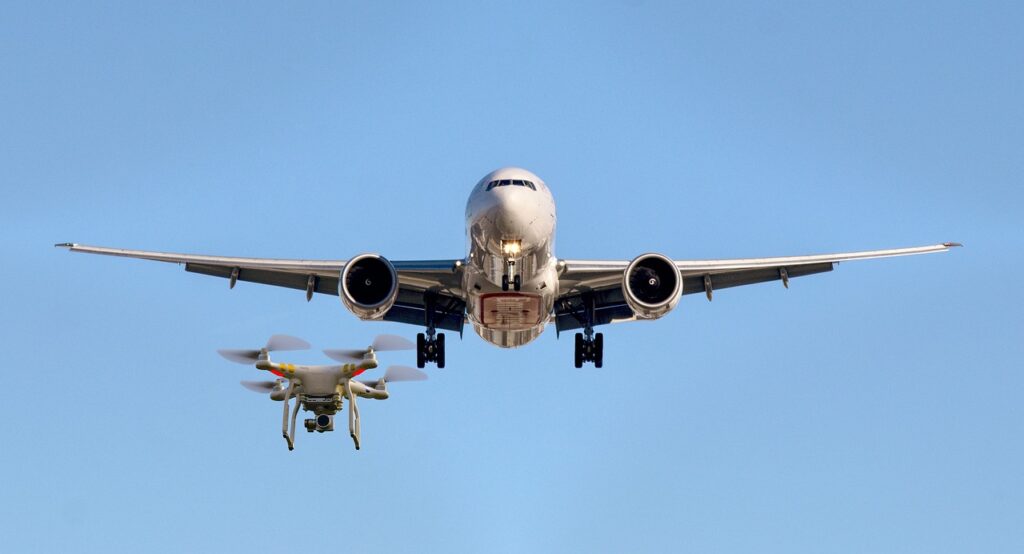
Representational image
Iran confronts a relentless U.S. sanctions barrage, with the latest round striking today, on April 1, 2025, targeting entities and individuals in Iran, China, and the United Arab Emirates (UAE) accused of procuring components for Iran’s unmanned aerial vehicle (UAV) program. The U.S. Treasury Department, under Executive Order 13382, designated one Iranian entity, two Iranian individuals, one Chinese firm, and four United Arab Emirates-based companies, alleging they supplied critical drone parts to Iran’s Islamic Revolutionary Guard Corps (IRGC), fueling UAVs used by proxies and Russia.
“The United States will use all available means to expose and disrupt Iran’s growing UAV and missile development programs and weapons proliferation, which destabilize the Middle East and beyond. We will continue to act against the complex schemes Iran uses in third countries to conceal its acquisition and its transfers of sensitive technology,” the U.S State Department said in Washington.
This follows February 28, 2025, sanctions on six Hong Kong and Chinese firms linked to Iran’s UAV and missile networks, part of over 1,000 sanctions—50 added since President Donald Trump’s January 20, 2025, inauguration.
Iran’s economy buckles, yet Tehran vows defiance, unveiling a “missile city” on March 25, 2025, while allies like China and Russia decry the measures. As Washington aims to throttle Iran’s military reach, has this strategy curbed Tehran or entrenched its resolve?
Iran’s Official Stance: Defiance Against Imperialism
Iran’s leadership frames U.S. sanctions as an imperialist assault, a narrative etched into its revolutionary core. “These sanctions are a war crime, meant to starve our people and crush our spirit,” Supreme Leader Ayatollah Ali Khamenei declared in a March 2025 state TV address. On the April 1 sanctions, Foreign Ministry spokesman Nasser Kanani today called them “illegal and coercive,” vowing Iran “will not bow to such aggression.” Foreign Minister Abbas Araghchi, addressing the February 28 measures on March 1, said, “Sanctions hurt, but they don’t paralyze us. We’ve turned their hostility into strength.” A March 2 statement denied Hong Kong’s firm involvement, promising “reciprocal measures” against U.S. interests—echoed on April 1 with threats of “proportionate responses” like targeting U.S. regional assets. Senior advisor Mohammad Javad Zarif, in a February Press TV interview, claimed, “The U.S. isolates itself, not us—we trade with nations rejecting their hegemony.” Iran touts a “resistance economy,” citing military and agricultural self-reliance as proof of resilience.
Sanctions Tally: A Crushing Load
The U.S. Treasury’s Office of Foreign Assets Control (OFAC) has imposed over 1,000 sanctions on Iranian entities and individuals, up from roughly 700 by the end of Trump’s first term in 2021. Since January 20, 2025, at least 50 new designations have hit, including February 4 oil export restrictions, February 28 UAV-missile network strikes, and now the April 1 drone program sanctions. Tehran dismisses these as “baseless pretexts,” pledging to adapt.
Resilience Unpacked: How Iran Endures
Iran’s endurance blends grit, improvisation, and external support, though strain is evident. The rial has plunged over 70% since 2018, with official inflation at 40%—unofficial estimates near 60% —and oil exports have shrunk from 2.5 million barrels per day to under 1 million, per International Energy Agency data. Sources in Washington say Tehran counters with a shadow economy, “smuggling” oil via ship-to-ship transfers off Malaysia or through Iraq. Cryptocurrency mining, legalized in 2019, yields millions, ranking Iran among the top 10 producers per the Cambridge Bitcoin Electricity Consumption Index.
Domestically, sanctions drive innovation—Iran produces 90% of its pharmaceuticals and nears wheat self-sufficiency. The March 25 “missile city” unveiling—featuring Kheybar Shekan and Haj Qasem missiles—signals a military-industrial complex thriving in isolation. Propaganda-stoked public resolve endures, with Dr. Sanam Vakil of Chatham House noting, “Iranians see endurance as pride.” Yet, unemployment exceeds 15%, youth joblessness doubles that, and bread price protests reveal unrest. “They’re surviving, not thriving,” Vakil warns. “It’s fragile.”
Who Supports Iran and Why?
Iran’s survival rests on allies defying U.S. pressure, their reactions to sanctions mixing solidarity with pragmatism. China, buying up to 800,000 barrels of oil daily per Kpler data, drives Iran’s economy with discounted crude, aligned with the 2021 $400 billion pact. On March 3, China called the February 28 sanctions “unilateral overreach,” pledging to “safeguard legitimate trade.” After April 1, Beijing’s Foreign Ministry on April 2 reiterated opposition, warning U.S. actions “threaten global supply chains,” reflecting its stake in Iranian oil and countering U.S. dominance. Russia, deepened in ties since Ukraine, trades diplomatic cover for Iran’s drones and missiles, like the Shahed-136. On March 4, the Kremlin condemned the February 28 measures as “counterproductive,” vowing deeper cooperation; on April 2, it labeled the latest sanctions “escalatory,” hinting at joint military drills. Dr. Matthew Levitt, Fromer-Wexler Fellow and director of the Jeanette and Eli Reinhard Program on Counterterrorism and Intelligence at the Washington Institute for Near East Policy, calls this “a marriage of convenience—both jab the West.” Türkiye, with $10 billion in 2024 trade per its Statistical Institute, stayed cautious, urging “dialogue” on March 5 and April 3, balancing NATO ties with profits. Venezuela decried both rounds as “imperialist” on March 6 and April 4, while Syria, mired in transition, remained silent. These alliances, vital yet at risk, face secondary sanction threats.
Trump’s Escalation: UAVs, Missiles, and Drones Targeted
The April 1 sanctions zero in on Iran’s drone program, targeting an IRGC-linked Iranian entity, two procurement agents, a Chinese supplier, and four UAE firms for allegedly providing engines and electronics for UAVs like the Shahed-136, used in Ukraine and by Houthis. These join the February 28 measures against six firms—FY International Trading Co., Duling Technology HK Limited, Advantage Trading Co., Shenzhen Rion Technology, China National Aero-Technology, and Guangzhou Homvee Technology—for supplying gyroscopes and GPS modules to PKGB. Both rounds freeze U.S. assets, bar American dealings, and threaten foreign banks, aiming to disrupt Iran’s military supply chains. Treasury Secretary Scott Bessent warned, “Iran’s deadly toys rely on foreign parts—we’ll sever those links.” The Treasury Secretary added, “Iran’s proliferation of UAVs and missiles—both to its terrorist proxies in the region and to Russia for its use against Ukraine—continues to threaten civilians, U.S. personnel, and our allies and partners… Treasury will continue to disrupt Iran’s military-industrial complex and its proliferation of UAVs, missiles, and conventional weapons that often end up in the hands of destabilizing actors, including terrorist proxies.”
Iran’s March 2 denial of February 28 claims and April 1 pledge of “responses” met skepticism—Iran’s Pishtazan Kavosh Gostar Boshra (PKGB)’s 2023 sanctions didn’t stop it. “It’s whack-a-mole,” Levitt said. “Iran reroutes faster than we list.” The April 1 move risks further straining U.S.-China ties, critics note, without fully dismantling Iran’s UAV network.
Success or Stalemate? A Deeper Dive
Do sanctions work? They’ve slashed Iran’s GDP by 10% since 2018 and gutted oil revenue, per World Bank estimates. The UAV and drone crackdowns could pinch military budgets if allies hesitate—yet Iran’s nuclear programme advances, with 60% uranium enrichment per a January 28 Economist report, and proxies persist. “Sanctions batter the economy, not the ideology,” Vakil said. “Resilience reflects our failure to offer incentives.” Levitt adds, “Maximum pressure binds Iran to Russia and China, shrinking our leverage.” Iran agrees, with Zarif claiming, “They fear an independent Iran.” Hardliners tighten control, moderates wane, and dissent simmers—a duality of endurance and erosion. The February 28 and April 1 sanctions disrupt but don’t deter, punishing without shifting Iran’s path.
The Path Forward
As of April 1, 2025, Iran shoulders over 1,000 sanctions, with Trump’s 50-plus additions since January 2025—culminating in the latest drone-focused measures—intensifying the squeeze. Resilience via “smuggling”, innovation, and allies like China and Russia keeps Iran afloat, defying collapse. Iran’s defiance and allied support signal no retreat, yet economic strain and military bravado hint at a tipping point. Whether this pressure forces concessions or fuels confrontation remains Trump’s unresolved gamble.






